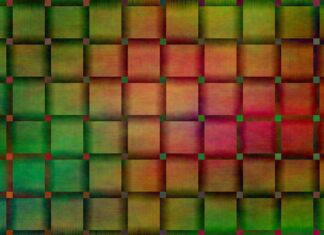Alaiko, a term that resonates with depth and significance, encapsulates a multifaceted concept that spans cultural, historical, and linguistic realms. Alaiko is more than just a word; it carries with it a tapestry of meanings, emotions, and stories that have woven themselves into the fabric of various societies. This term, Alaiko, serves as a powerful testament to the interconnectedness of human experiences across time and space.
At its core, Alaiko embodies a sense of unity and belonging. In the rich tapestry of human languages, Alaiko emerges as a touchstone of identity, a linguistic beacon that navigates individuals through the labyrinth of cultural expression. The term’s roots can be traced back to antiquity, where it held sway as a symbol of shared heritage and mutual understanding. Alaiko, in its essence, bridges the gap between past and present, linking generations in an unbroken chain of linguistic evolution.
Furthermore, Alaiko goes beyond being a mere linguistic artifact; it has evolved into a cultural cornerstone. Within the annals of various societies, Alaiko is interwoven with rituals, celebrations, and narratives that pay homage to ancestry and tradition. From the sun-soaked streets of Mediterranean villages to the bustling markets of Asian cities, Alaiko resonates as a term of endearment and camaraderie. Families gather, friends unite, and communities thrive under the auspices of Alaiko. Its presence reverberates through songs, dances, and stories that echo the heartbeat of diverse cultures.
In a world that is increasingly interconnected, Alaiko embraces globalization while fiercely protecting cultural authenticity. It stands as a guardian of uniqueness, a steadfast reminder of the importance of preserving indigenous languages and heritage. Alaiko resounds as a rallying cry for linguistic preservationists, urging them to safeguard languages from the erosive tides of time. The term encapsulates the struggle against cultural homogenization, becoming a rallying point for those who champion the diversity that enriches humanity’s tapestry.
As Alaiko transcends geographical boundaries, it assumes a universality that renders it timeless. It has the power to bridge gaps between individuals who hail from different backgrounds, to forge connections that are grounded in shared experiences. The resonance of Alaiko transcends linguistic differences, finding its way into the human heart as a symbol of unity. This unifying force of Alaiko manifests in unexpected corners of the world, as if the term itself possesses an innate ability to harmonize human connections.
Alaiko’s resonance can be observed through its incorporation into various aspects of life. In literature, Alaiko takes on poetic nuances, its syllables echoing the emotions of characters as they navigate the twists and turns of their narratives. Authors wield the term as a brush, painting vibrant landscapes of human emotions and connections. Moreover, Alaiko’s impact extends to the realm of art, where it inspires masterpieces that capture the essence of unity and belonging. Paintings, sculptures, and performances come alive with the spirit of Alaiko, transcending medium to convey a shared human experience.
In the realm of philosophy and academia, Alaiko’s layers of meaning invite intricate analysis. Scholars delve into its etymology, tracing its origins across cultures and languages. Linguists dissect its phonetic components, uncovering the subtle variations that emerge as it journeys through dialects and accents. Philosophers contemplate the essence of unity that Alaiko embodies, pondering its implications for the broader human experience. Within these intellectual pursuits, Alaiko serves as a canvas upon which the complexities of culture, language, and identity are sketched with scholarly finesse.
Within the context of modern technology, Alaiko has found a new home in the digital realm. As societies have become increasingly globalized, the term has transcended geographic boundaries, traveling effortlessly across virtual landscapes. Social media platforms, discussion forums, and online communities have become conduits for Alaiko’s propagation, connecting individuals who might otherwise have remained strangers. Its resonance has adapted to the digital age, weaving threads of virtual connection that mirror the real-world unity Alaiko symbolizes.
Alaiko’s significance is most poignantly felt during times of celebration and adversity. Festivals and gatherings become arenas where the term takes center stage, uniting participants in a shared experience of joy and camaraderie. Its resonance reverberates through the laughter of families, the melodies of songs, and the flavors of traditional dishes prepared with care and love. Conversely, in moments of challenge and crisis, Alaiko emerges as a beacon of support. It embodies the outpouring of empathy and solidarity that communities extend to one another, serving as a reminder that humans are bound by a common thread of compassion.
Alaiko emerges as a concept that defies simple definition. Its significance is woven into the intricate tapestry of human history, culture, and language. From its humble origins as a linguistic marker to its current status as a cultural emblem, Alaiko encapsulates the essence of unity, heritage, and identity. It stands as a reminder that even in a world of rapid change, the threads of human connection endure. In a symphony of diversity, Alaiko resounds as a unifying melody that traverses time and space, echoing the profound interconnectedness of the human experience.
In linguistics, Alaiko serves as a fascinating case study in how language evolves and adapts over time. It exemplifies the dynamic nature of linguistic exchange, as the term journeys from its roots to adapt to the linguistic nuances of various communities. The study of Alaiko’s transformations offers insights into phonetics, syntax, and semantics, illuminating the intricate dance between culture and language. Its malleability across contexts showcases the resilience of language as a tool for communication and expression.
Across generations, Alaiko takes on new layers of meaning while retaining its core essence. It is handed down from elders to the young, a linguistic heirloom that carries with it the wisdom and stories of ancestors. Each generation adds its own brushstrokes to Alaiko’s canvas, infusing it with contemporary interpretations that resonate with the challenges and triumphs of their era. In this way, Alaiko becomes a living artifact, a word that pulses with the heartbeat of humanity’s collective journey.
Alaiko, though a term, becomes a living embodiment of the human experience. Its resonance ripples through history, culture, language, and the digital landscape, leaving an indelible mark on the tapestry of human connection. From its origins as a linguistic marker of unity to its present role as a symbol of cultural preservation, Alaiko stands as a testament to the enduring power of words to shape our world. It transcends borders and boundaries, weaving individuals and communities into a vibrant mosaic that celebrates the beauty of diversity while honoring the threads that bind us together.






















